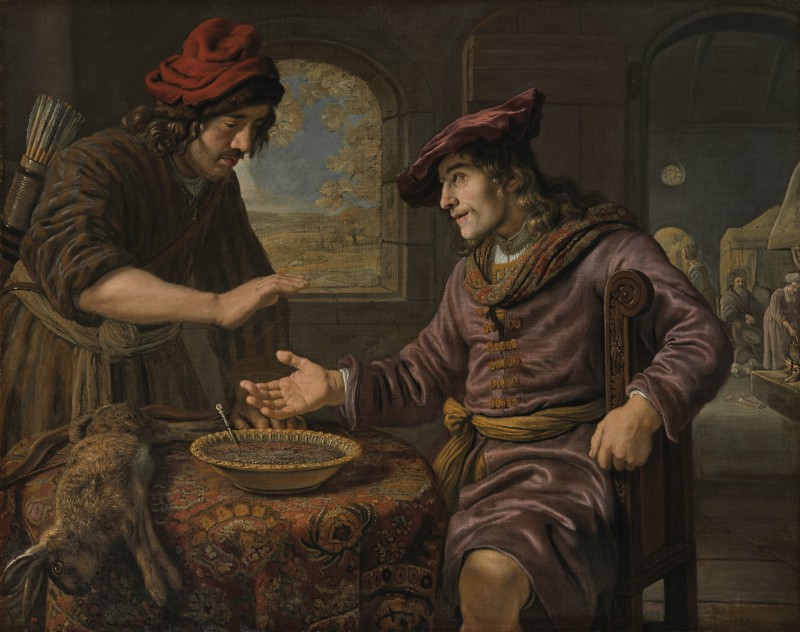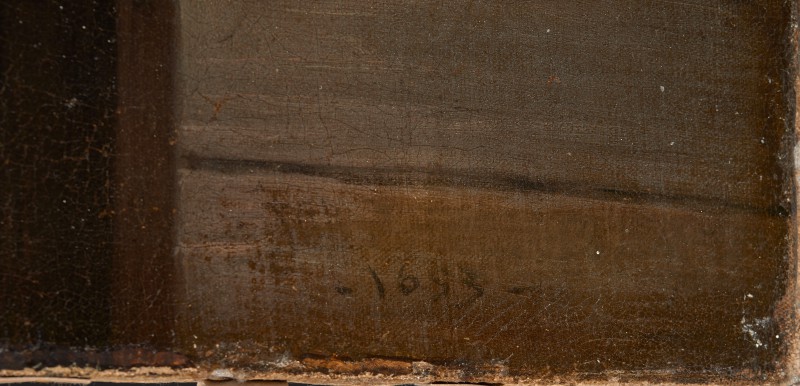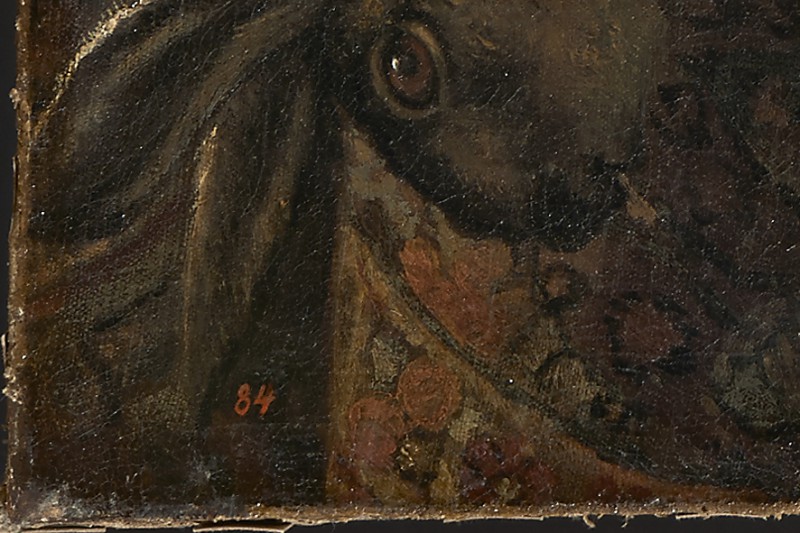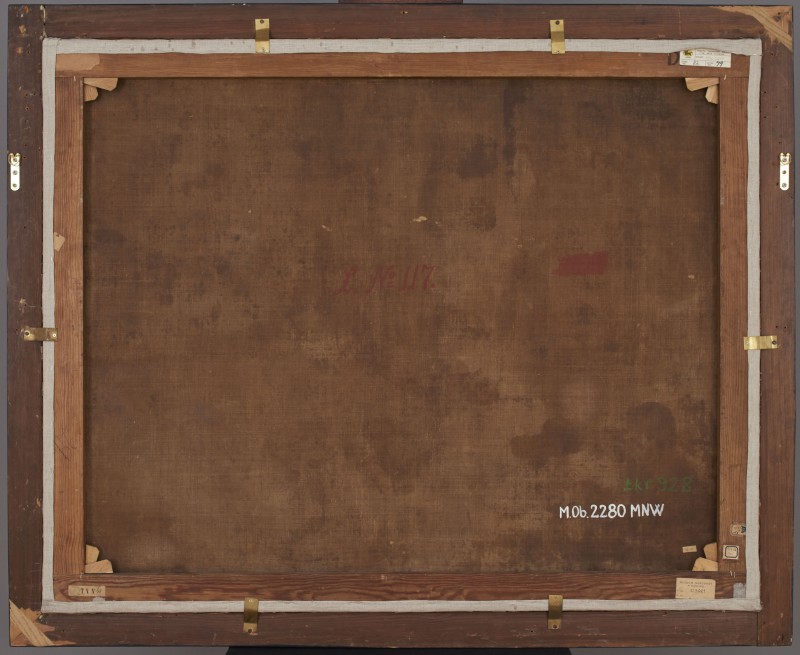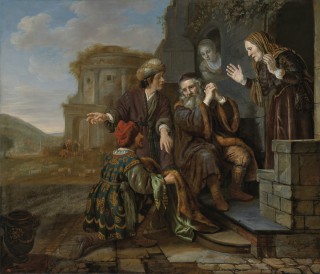Esau Selling His Birthright to Jacob for a Pottage of Lentils
- Date
- 1653
- Object type
- painting
- Technique
- oil
- Material
- canvas
- Dimensions
- 109,0 x 137,0 cm
- Acquisition date
- 1775
- Location
- The Palace on the Isle - Picture Gallery, ground floor
- Marks and inscriptions
- signed and dated J…/ 1653., bottom right (signature heavily damaged). red number 84 of the Stanisław August collection, bottom left
- Place of Origin
- Netherlands (Europe)
- Owner
- The Royal Łazienki
- Museum number
- ŁKr 928
Genesis 25: 29–34. …
As determined by Debra Miller, the painting has a pendant, signed J Victors / 1653, showing Ruth and Naomi (Ruth 1: 15–17), formerly in a private collection, 4 June 2015 on sale at Sotheby’s in New York, lot no. 41 (canvas, 109 x 137 cm; D. Miller, Jan Victors 1619–76, diss., University of Delaware 1985, no. 67), composed in a similar manner—the figures shown half-length in the close foreground.
The paintings form a pair with regard to their composition and subject, based on a dialectical combination of complementary, yet juxtaposed motifs, thus fulfilling the 17th-century Dutch criteria for ‘weergar’ or ‘wedegarde’—namely pendants … . The scene depicting Jacob and Esau in an interior is juxtaposed with the scene of Naomi and Ruth set in a landscape; male protagonists with female protagonists, and rivalry between siblings—with love and filial affection. Both scenes are an interpretation of one of the most fundamental biblical themes—the immutable continuity of the male line of Abraham’s descendants, which is maintained thanks to the decisions taken by the protagonists: Esau sold his birthright to his younger brother, Jacob, while the widowed Ruth did not return to her mother, but remained with her husband’s family (Miller 1985, pp. 178–79). … [D. Juszczak, H. Małachowicz, The Stanisław August Collection of Paintings at the Royal Łazienki. Catalogue, Royal Łazienki Museum, Warsaw 2016, no. 112, pp. 410–411.]
